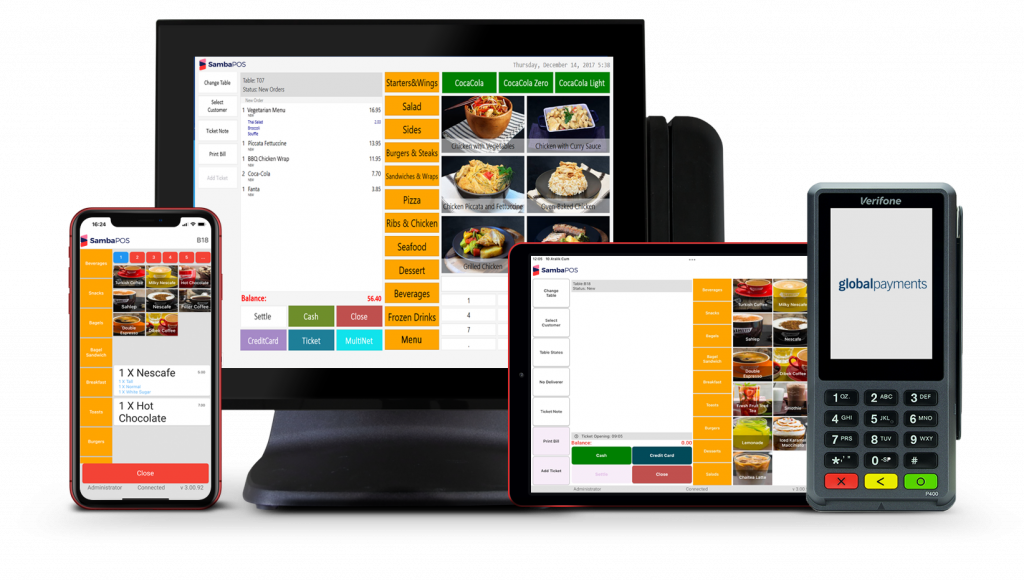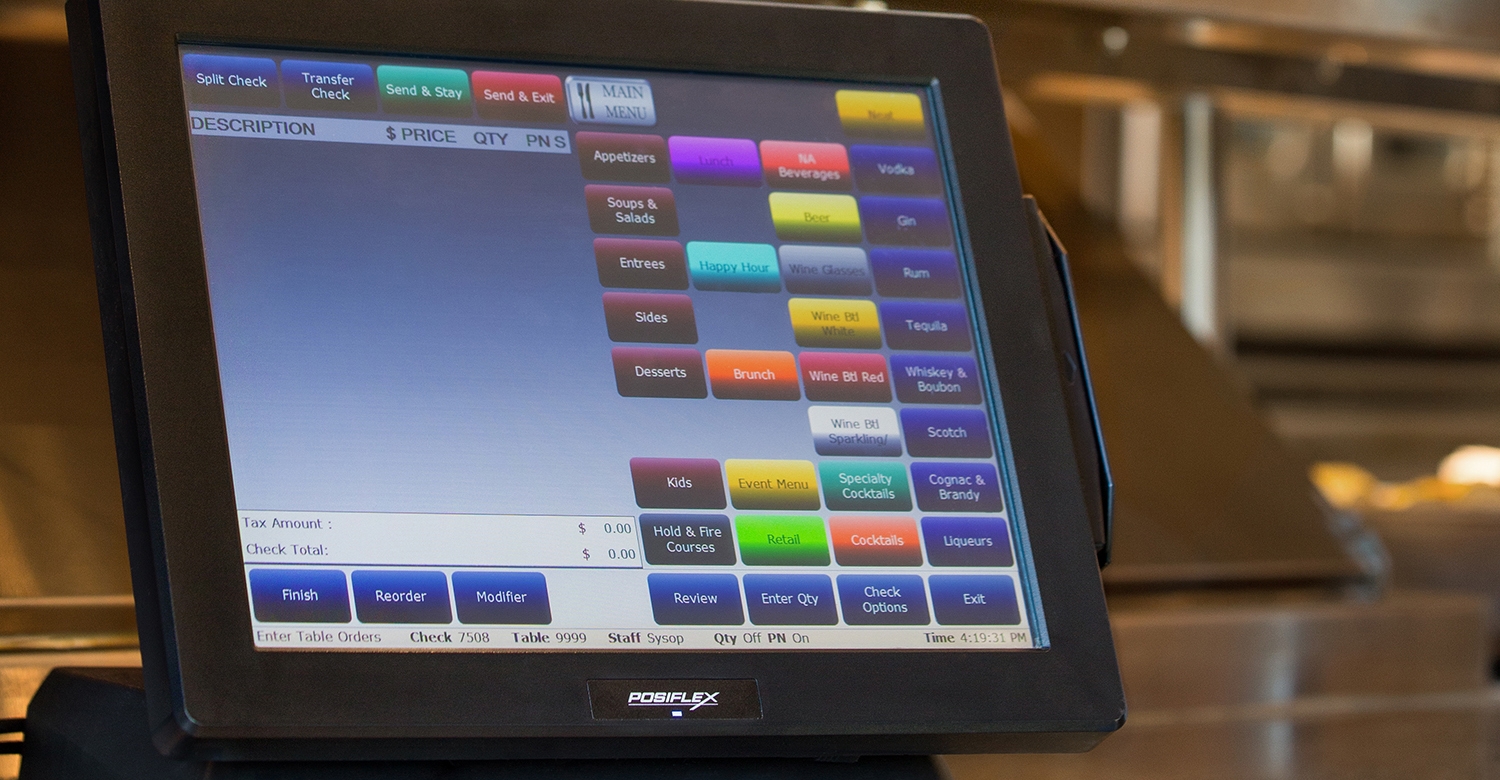Can modern Restaurant POS Software help with staff scheduling?
Exactly How POS System Works: A Comprehensive Overview for Company Owners
A POS system functions as an essential tool for modern companies, incorporating various components to streamline procedures. It encompasses hardware like barcode scanners and software program for sales tracking. This system not just processes deals but also handles stock and assesses consumer habits. Understanding its functionality can substantially affect a service's performance and decision-making. What are the vital components that add to this efficiency? Checking out these elements supplies valuable understandings.
Comprehending the Parts of a POS System
A Factor of Sale (POS) system is made up of numerous vital parts that interact to assist in transactions and take care of service operations. At its core, the hardware consists of gadgets such as a cash money register, barcode scanner, receipt printer, and settlement incurable, all crucial for processing sales (Restaurant POS Software). The software program part handles stock, sales tracking, and client data, supplying important insights for service decisions.Additionally, data sources save deal records and client details, making sure data stability and protection. Network connection makes it possible for real-time updates and access to cloud-based solutions, improving functional effectiveness. Interface, created for simplicity of use, enable staff to browse the system promptly, reducing training time. With each other, these parts produce a cohesive system that simplifies the sales procedure, enhances customer care, and aids in effective monitoring of company resources. Comprehending these components is crucial for service owners seeking to maximize their POS systems
Just How Sales Deals Are Processed
When a customer decides to purchase, the sales transaction launches a collection of methodical steps within the POS system. The cashier inputs the things being bought, which are checked with a barcode visitor or by hand entered. This action recovers product details, including rates and applicable taxes, from the system's database.Next, the client exists with the overall quantity due. The POS system then refines the payment, whether through cash, credit rating card, or mobile settlement techniques. For electronic settlements, the POS securely connects with payment processors to accredit and verify the transaction.Once the payment is validated, the system creates an invoice, which can be printed or sent out electronically. This receipt acts as receipt for the customer. The deal information is taped in the system, making sure precise sales records and financial tracking for the service.
Stock Management and Tracking
Efficient inventory monitoring and tracking are crucial parts of a POS system, as they guarantee that companies keep perfect supply levels and reduce discrepancies. A durable POS system enables real-time supply updates, reflecting sales and returns instantly. This makes it possible for local business owner to monitor supply degrees precisely, guaranteeing that preferred items are conveniently offered while protecting against overstocking of much less preferred products.Additionally, advanced POS systems supply features such as automatic supply alerts and reorder suggestions, enhancing the purchase procedure. Barcoding and RFID technology improve accuracy in tracking supply motion, minimizing human error. Extensive coverage tools provide insights into inventory turn over prices, assisting organizations make notified decisions concerning purchasing and item offerings. Eventually, effective inventory administration with a POS system not only boosts functional efficiency yet likewise enhances client satisfaction by making certain item schedule.

Examining Consumer Data and Insights
Consumer information analysis functions as a powerful device for companies making use of a POS system. By gathering and examining deal information, services can discover valuable understandings concerning customer behavior and preferences. This analysis allows them to determine acquiring patterns, peak shopping times, and popular items, consequently educating supply decisions and advertising and marketing strategies.Additionally, organizations can section their client base, permitting for individualized marketing initiatives that deal with particular demographics or buying behaviors. Recognizing consumer commitment patterns also aids in creating targeted promotions and rewards programs.The data gleaned from a POS system can also reveal understandings right into customer comments, allowing businesses to make enlightened choices concerning item offerings and solution improvements. Inevitably, leveraging client information website here effectively can improve the overall buying experience, foster customer complete satisfaction, and drive revenue growth.
Benefits of Executing a POS System
Executing a POS system provides countless advantages that can greatly enhance business operations. To begin with, it improves purchase procedures, reducing wait times and enhancing customer satisfaction. By automating sales procedures, services can decrease human error and warranty accurate record-keeping. Furthermore, a POS system offers beneficial data analytics, enabling proprietors to track sales fads and supply degrees in real-time. This insight supports notified decision-making, assisting to enhance supply administration and advertising strategies.Moreover, many POS systems integrate with various other business devices, such as accounting software, streamlining financial monitoring. Improved employee administration features, such as tracking hours and efficiency, additional add to operational efficiency.Lastly, the implementation of a POS system can lead to boosted earnings via boosted customer experiences and strategic insights, eventually fostering business development and sustainability.
Regularly Asked Inquiries
What Kinds of Organizations Can Profit From a POS System?

Just how much Does a POS System Typically Expense?
The price of a POS system normally varies from a couple of hundred to several thousand bucks, depending on features, equipment, and software - Restaurant POS Software. Organizations have to think about ongoing fees for upkeep, support, and purchase handling when budgeting

Can I Integrate a POS System With Existing Software?
Integrating a POS system with existing software application is frequently feasible. Many systems offer APIs or integrated compatibility functions, enabling services to streamline operations and boost capability by linking numerous software applications successfully.
What Training Is Needed for Personnel to Utilize a POS System?
Educating for personnel to utilize a POS system usually consists of understanding software functionalities, processing transactions, managing supply, and dealing with client communications - Restaurant POS Software. Practical demos and hands-on practice improve efficiency and confidence in operation the system efficiently
What Takes place if the Web Decreases While Using a POS System?
If the web decreases throughout POS system use, transactions may be disrupted. Numerous systems try here provide offline abilities, enabling standard operations to continue, however complete capability, including real-time inventory updates, will certainly be limited.